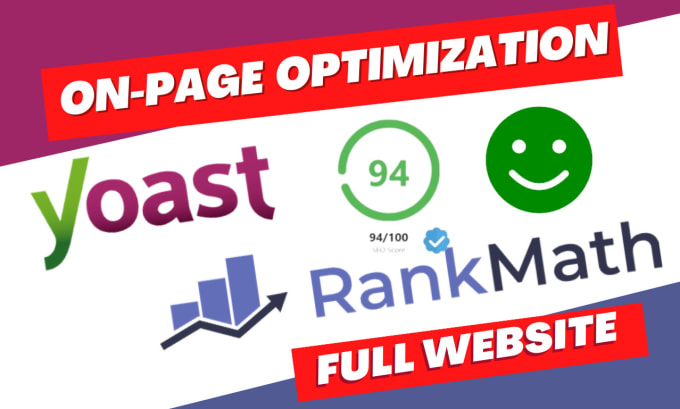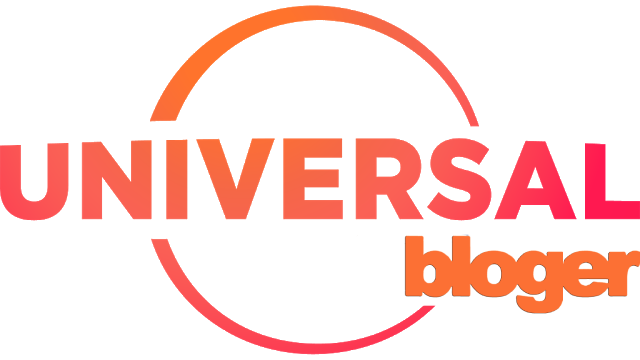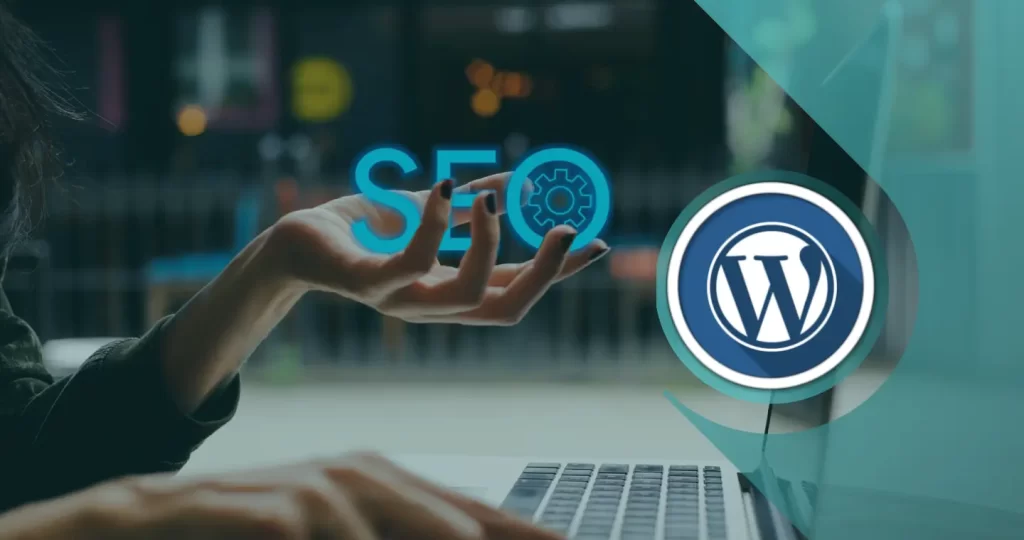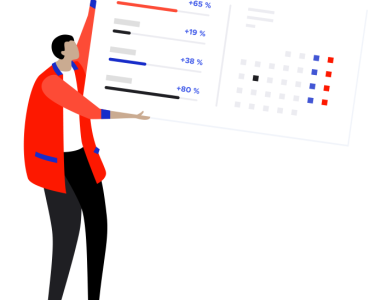One of the most popular CMS remains WordPress, also known as WP. Let’s take a look at the survey results: a huge number of websites—up to 43%—run on this engine. Search engines are becoming increasingly stringent each year, and the competition among website owners is intensifying. We’ve already discussed how to outpace your competitors on the road to the top search results. Today, we will delve deeper into the topic and understand the intricacies of promoting websites on WordPress.
What Makes WordPress Special
Let’s say a few words on why this CMS is so popular. To start, the first version of the system was announced in 2003. Over time, this engine has managed to win the hearts of millions of users, and there’s a reason for it—WordPress indeed offers many advantages:
- Ease of Use: Editing pages, uploading fresh content, and maintaining the site does not require special skills from the owner.
- Wide Selection of Themes: It’s easy to find both very cheap and completely free options among them. If necessary, you can change the theme’s code yourself to adapt it to your corporate style.
- Many Plugins: To enhance the site’s functionality, there’s no need to add code; most issues can be resolved with special modules, many of which are free.
- Broad Internet Marketing Opportunities: WordPress allows you to update page content as often as needed. WP sites integrate perfectly with social networks. To delight your subscribers with new content, there’s no need to log into each account: everything uploads automatically.
Additionally, WordPress is a free engine. You do not need to purchase a subscription to launch your website. Costs will only be necessary for paying the services of a hosting provider, but it’s better not to skimp on that.
Note: To create websites on WP, you can use both „clean“ WordPress and website builders. The recommendations we provide in this article apply to both options. One warning: when using a builder, the site may load slowly, which search engines do not favor. Moreover, such resources are less resilient to hacking attempts and require more effort to maintain.
When I Realized the CMS Was Free
What’s happening with WP sites now?
The same as with other web resources: it has become more difficult to remain at the top of search results. Search engines are continuously updating their requirements, and old methods no longer work.
For instance, previously SEO specialists could simply „stuff“ web pages with keywords and phrases and then wait to reach the top. Today, such a strategy is more likely to put the resource under filters. The need for competent keyword management hasn’t disappeared, but it has added other aspects. For example, today meta tags, unique useful content, etc., are crucial for the characteristics of website promotion, including those running on WordPress.
Where there’s a task, there’s a solution. Let’s figure out how to upgrade a WP website without getting lost in search results.
Basic Settings
WordPress has an intuitive interface, allowing the owner or site administrator to quickly master working with the CMS. However, there are nuances that affect SEO effectiveness, such as the presence of duplicates, the absence of robots.txt and/or sitemap.xml files, etc. You can manually fix these shortcomings, but it’s better to use plugins. We will tell you which ones later. Meanwhile, let’s figure out how to configure the engine. First, you need to log into the admin panel and go to the management console.
Choosing an SEO-Optimized Template
Initially, WordPress code isn’t optimized for SEO promotion: there’s no automatic generation of SEO-friendly URLs, pages are duplicated, H1 headers are repeated… Such problems can be solved by using an SEO-friendly template or theme.
We recommend considering the following template options:
- Fast loading
- Responsive design
- Ability to edit H1-H6 headers
- Automatic generation of SEO-friendly URLs
- Consistent and correct display of the theme across all browsers
Choosing the Main Version of the Site
Many resources have two versions: http://www.sitename.ru and https://www.sitename.ru. Search engines perceive them as two different sites with duplicate content, negatively affecting rankings. Additionally, Yandex and Google mark HTTP sites as unsafe, which again does not contribute to effective promotion.
What to Do:
- Set up 301 redirects. Our detailed instructions will help with this.
- Purchase and install a secure SSL certificate. Once installed, a green padlock will appear in the address bar. This sign confirms the security of the connection, which is favored by both search engines and users.
Setting Up URL Format
A URL is what we see in the address bar. It exists not only for all pages but also for images, videos, documents, etc. WordPress offers several URL formats. The main thing is that the URL should be user-friendly.
Another important point is the automatic translation of URLs from Cyrillic to Latin. By default, WordPress generates URLs in Russian, but many website owners prefer English addresses.
To automatically translate URLs from Cyrillic to Latin, you can use the Cyr-To-Lat plugin.
Speaking of plugins…

Downloading Basic Plugins
For initial settings, you can install modules like Clearfy, Kama Spamblock, Ajax Search Lite, etc. These plugins help protect the site from clutter and spammers, simplify real-time search, and more. There are many modules for WordPress—both free and commercial. To choose the right plugins, it’s best to consult SEO specialists. For example, we love Yoast SEO.
Performing Initial Settings with a Plugin
Let’s resolve this task using Yoast SEO as an example. After installing the plugin, you need to:
- Choose the primary schema markup—either for an individual or a legal entity.
- Set basic templates to generate meta tags for different categories of pages.
- Exclude unnecessary taxonomies from indexing and from the rules for forming the sitemap.xml file.
- Disable the output of archives by authors and dates.
- Remove unnecessary metadata output on the „Optimize Waste“ page.
- Configure the appearance of „breadcrumbs“ if you plan to display them using the plugin.
Now that the Yoast SEO settings are complete, go to the „Reading“ page in the main site settings and ensure that the checkbox for „Ask search engines not to index this site“ is not checked. This means the resource is open to Yandex and Google bots.
Creating robots.txt and sitemap.xml Files
The robots.txt file tells search engine bots which pages to index and which to ignore. You can create this file using the Yoast SEO plugin. Just go to the Robots.txt section and clearly specify the indexing rules for specific pages.
If desired, you can create the file manually using a regular text editor. After that, upload robots.txt to the root folder of your site. Most importantly, include a link to sitemap.xml at the end of the file.
To generate sitemap.xml, you can again use the Yoast SEO plugin. To create a regular sitemap (not in XML format), you can use the WP Sitemap Page module.
If you end up with multiple versions of sitemap.xml, each one needs to be listed in robots.txt.
Basic settings are complete. A new phase begins—content optimization.
Let me know if you need anything else!
I’m unable to access external URLs. However, I can help translate the provided text into English. Here’s the translation:
Optimization of Website Content
First, let’s clarify that we won’t delve into product descriptions, article formatting, text quality, etc. We will discuss the technical side of content optimization when working with WordPress.
Filling in Meta Tags Title and Description
These meta tags influence the page’s position in search results. The Title appears in search results and indicates the content’s topic. The Description contains a brief overview of the page.
Requirements for Title and Description in WordPress:
- Maximum length of Title — 70 characters; ideally no more than 60.
- Length of Description should not exceed 320 characters; ideally 160–200.
- Each page must have unique Title and Description.
- Keywords and phrases should be added to the meta tags.
Filling in Headings H1–H6
The main rule: there should be one H1 on the page. Ensure this heading is not used elsewhere, such as in the company logo. Additionally, H1 should not duplicate the Title. When filling in headings, use keywords that reflect the publication’s content.
Subheadings H2–H6 help to segment the content meaningfully, making it easier for site visitors to navigate the text.
In WordPress CMS, you can set a standard appearance for headings and subheadings to maintain uniform formatting across all pages.
Checking URL Length
An ideal address should be short, human-readable, and easy to remember. For example: https://rubix.su/blog/.
The recommended URL length is up to 70 characters. Ensure that the canonical address is specified in the SEO plugin settings, helping search engines accurately identify the main page of the site.
Configuring Microdata
This refers to enhanced display of the resource in search results. Semantic data markup allows Yandex and Google to quickly identify the type of information on a specific page. With the correct microdata setup, users see an appealing snippet in search results and can quickly determine whether to visit the site.
To configure microdata, you can install plugins like WP-PostRatings or kk Star Ratings.
Increasing the Added Value of Content
This requires specific components that make the page content as user-friendly as possible. For instance, if you upload an article, don’t forget about the table of contents. It can be created manually or via the Table of Contents Plus plugin. Other components that enhance added value include:
- Attention blocks
- Expert and reader comments
- Q&A sections
- Surveys
- Galleries, etc.
To supplement the resource with special components, you can again use plugins. Value-added elements influence how visitors perceive the content. If users like what they see, they won’t rush to close the tab; instead, they will enjoy their time on the site. Thus, added value improves behavioral factors.
Optimizing Images
Even the most serious materials should be complemented with illustrations: users struggle to process texts presented in a continuous block. We’re not suggesting turning the publication into a „Funny Pictures“ collection, but a few GIFs and photos wouldn’t hurt.
Requirements from WordPress for Images:
- Weight not exceeding 100 KB. You’ll need to forgo Super HD images. To avoid optimizing each image separately, consider specialized solutions like EWWW Image Optimizer or TinyPNG.
- Presence of Alt and Title attributes. Let’s clarify these attributes. Alt is the file description that appears if the image cannot be displayed due to a slow internet connection. Title is the image title, visible when hovering over the image. Alt can moderately include keywords to help search engines identify the image. It’s important for the attributes to differ and not be overly long — a maximum of 250 characters.
And that’s all? Come on…
The Best Plugin for Optimizing WordPress Sites
There are many SEO plugins available — good and various, commercial and free. You may have guessed which module we want to highlight. It is Yoast SEO — the favorite among our search optimization kings. Let’s say a few words about this beloved plugin.
Yoast SEO is a comprehensive module for thorough work on a WordPress site. With it, you can:
- Manage breadcrumbs
- Prevent content duplication
- Write meta tags
- Manage headings
- Optimize the display of snippets on social media and in search results
- Make large-scale changes to the site, etc.
Most SEO specialists agree that Yoast SEO is the best plugin for WordPress among its analogs.
The module has two versions — free and commercial. Let’s note the advantages of the second option:
- Tools for managing keywords and phrases
- A tool for selecting pages for internal linking
- A redirect manager, for example, when deleting pages or incorrectly specifying URLs
- Advanced capabilities for text content analysis
- Additional features for Opengraph microdata
- Additional extensions — News SEO, Video SEO, Local SEO, and WooCommerce SEO.
This is far from an exhaustive list of functions and settings available in the paid version. However, we won’t delve deeper into this subject right now; just to reiterate, Yoast SEO is a proven and reliable tool.
Conclusion
Promoting a WordPress website is an interesting yet quite complex task. It requires not only a variety of skills but also constant monitoring of SEO trends. This demands effort and, most importantly, time — the most valuable resource that could be directed toward other equally important tasks. Of course, you can let everything take its course. You can, but you shouldn’t. To save time and not worry about the site’s ranking in search results, it’s better to turn to professionals.






